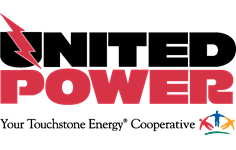 Transitions in life, both personal and professional, always have interesting twists.
Transitions in life, both personal and professional, always have interesting twists.
I lived the switch from conventional “hot type” typesetting to “cold type” primitive computers in my first career out of college as a newspaper reporter. The old way of making newspapers required placing individual letters — that were made of lead — into large, heavy frames in a reverse mirror image. The frames were then bolted onto giant printing machines where rolls of paper became the newspapers we read every day. The thunderous, dangerous, and noisy pressrooms gave way to an era of photo sensitive paper, waxed into big sheets, copied onto plastic and attached to the same giant printing machines. It was just the beginning of the change that would make everyone into a journalist — good and bad — with the ability to wirelessly send their stories anywhere in the world with the touch of a button. Unfortunately, it has sadly meant the demise of many printed newspapers.
The twists and turns and unintended consequences did not happen overnight. In fact, in the world of publishing, the death of local newspapers has been gradual over the decades, not a sudden crash and burn. This change has been a bit painful for those of us who still cherish the smell and feel of a Sunday morning newspaper. I have never been able to get used to the feeling of reading on an iPad; it does not give me the same warm memories as a paper rolling off the presses, making my fingers slightly dirty.
The energy transition has may parallels with newspapers that are rolling out over a quickening pace. The traditional “hot type” world of large power plants and massive transmission projects is giving way to smaller scale generation, power at the distribution system level, and thousands of households adding local resources.
United Power is working through the ins and outs of our transition to new power suppliers and a new way of operating. We are moving from a single large supplier to more than a dozen — managing our risk through system diversity. We are looking at new ways of operating our system and trying to keep as much hyper-localized and home grown resources as possible. The hyper-localized model, including significant amounts of energy storage, is going to be required as the time to build new transmission is coupled with the closure of major coal plants. This is not a political question but the reality of the marketplace matched with the changing face of regulatory environments.
Hyper-localized generation has significant benefits for our communities as it keeps tax dollars in our region, brings a higher level of reliability and control, and reduces the stress on the transmission grid at a time when more and more electrification is occurring. Our new fuel mix will dramatically reduce carbon intensity rates as we blend natural gas, renewables, and storage while also making the best use of the Board of Directors’ investments in the distribution system over the decades.
For United Power, the transition will occur in phases. Knowing our low tolerance for risk, we have constructed a portfolio that in the short-term mirrors much of what we have with our current supplier in terms of capacity — albeit slightly lower in cost than what we expect it to be in the next 24 months — with a significant change in the mix of energy. As capacity becomes less expensive and markets develop in the short time beyond that window (2026-2027), we will become experts in managing and operating our system with the new tools in place.
As one of my business school professors always mused, “The future is already here, it is just not widely distributed yet.” At United Power we are committed to this transition for the benefit of our members.
As always, please feel free to reach out to me with any questions.

